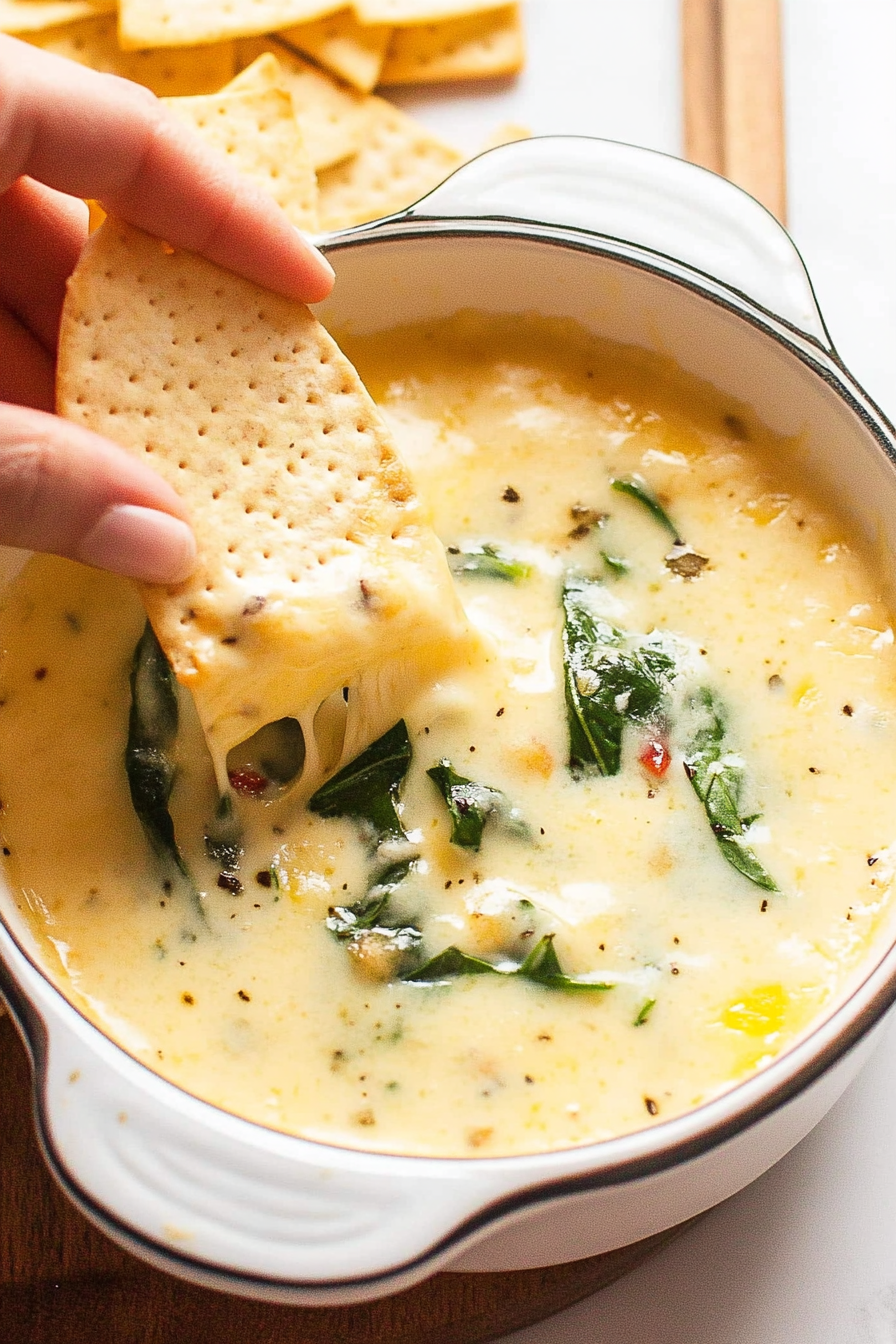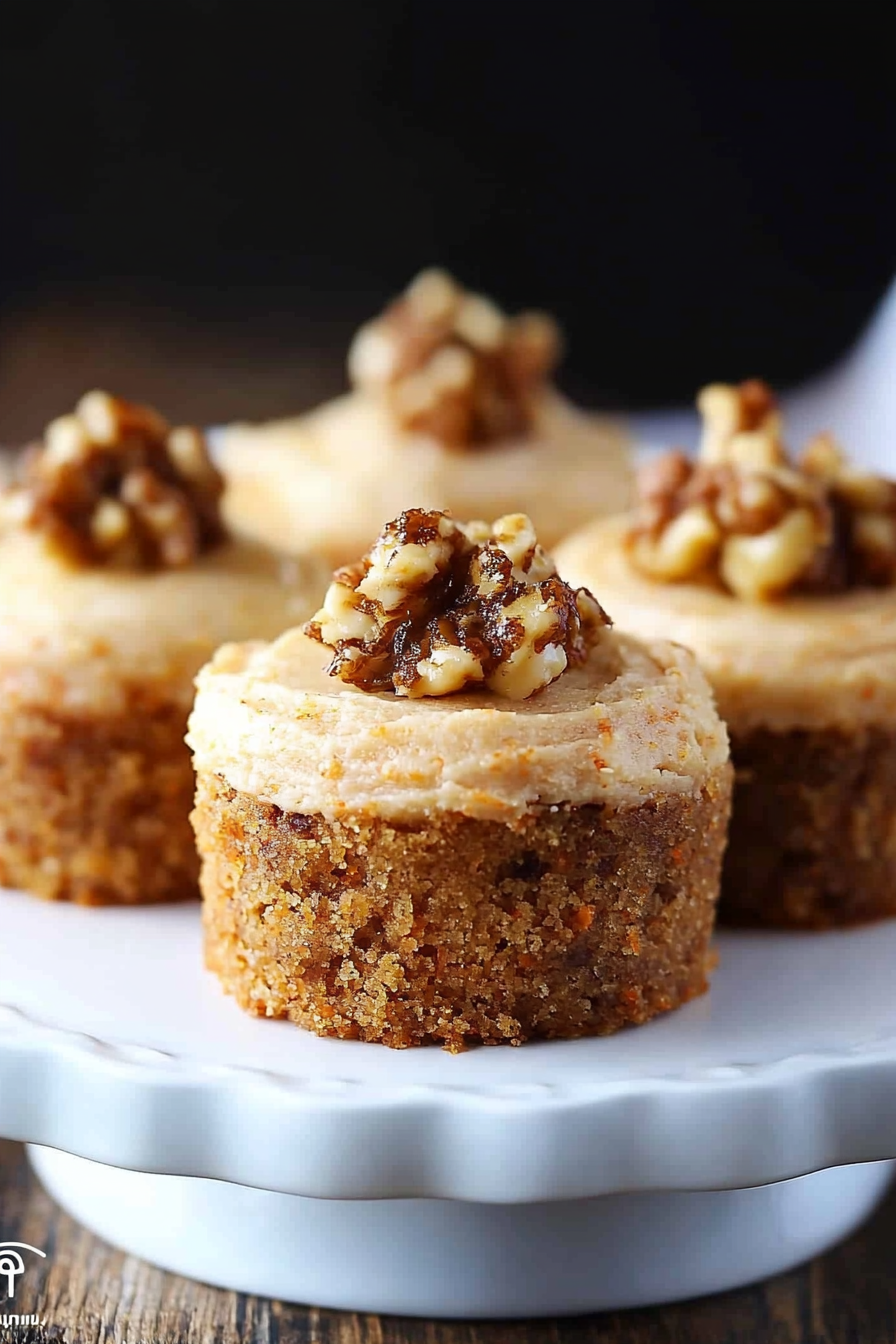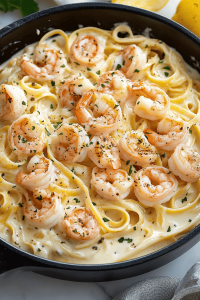I still remember the first time I Roasted Carrots for Sunday dinner—the kitchen filled with that sweet, earthy scent that seems to wrap around you like a cozy blanket. It wasn’t just about the carrots; it was about the quiet, the clink of a spoon against a glass jar, and the way everyone gathered around the table, even the dog nudging a napkin with hopeful eyes. Roasted Carrots have a way of turning simple vegetables into something you crave. They’re incredibly flavorful, honest, and if you’ve got a sheet pan and a little patience, they come together faster than you think. I call them the closet-friendly side dish: not fussy, absolutely reliable, and a little irresistibly caramel-y at the edges. This is what I reach for on busy nights when I want something comforting without a lot of fuss. And yes, I’m the kind of person who will pair roasted carrots with almost anything—roasted chicken, a quick tahini drizzle, or even tucked into a grain bowl for a pop of color and sweetness. Roasted Carrots are like a warm hug on a plate, and I’m excited to share how I make them shine every single time.
What is roasting carrots?
Roasted Carrots are simply carrots that get tossed with a bit of oil, salt, and a handful of seasonings, then roasted until their natural sugars caramelize and the edges become gently crisp. Think of it as taking the sweetness of a carrot to a new, toasty level. The name is straightforward, but the flavor is remarkable—the carrots transform from sturdy and pale to glossy, glossy orange gold with a whisper of smoke from the oven. It’s essentially a simple vegetable side, but the roasting method elevates texture and perfume in a way that makes the dish feel special without ever demanding a complicated technique. My approach keeps things friendly: you’ll taste the carrot’s inherent depth, plus a few bright notes from zest, herbs, or a tangy glaze, depending on how you dress them up. It’s the kind of dish that makes you sigh with satisfaction—clean flavors, humble ingredients, maximum impact. And yes, this is one of those recipes I’ve tested countless times; the technique never fails, and the aroma alone can stop a timer mid-sentence to pull someone into the kitchen for a taste.
Why you’ll love this recipe?
What I love most about Roasted Carrots is that they deliver big flavor with minimal effort. This isn’t just a side dish; it’s a blank canvas you can tune in a dozen ways without breaking a sweat. Here’s what makes it a kitchen lifesaver in my book:
- Flavor: The carrots soften into silky centers while their edges caramelize into crisp, almost toffee-like bites. A kiss of citrus, a pinch of spice, or a drizzle of honey can turn this simple sheet-pan roast into a shine-ready dish.
- Simplicity: You can toss everything on a sheet pan, slide it into the oven, and forget about it for twenty minutes. The oven does the heavy lifting, and you’ll have time to set the table, pour a drink, or chat with the kids about their day.
- Cost-efficiency: What is the best way to measure cost-efficiency?Carrots are affordable, versatile, and hearty. A small bunch of carrots goes a long way, especially when you balance the
- Versatility: They work as a side to roast chicken, a bed for a warm grain bowl, or a vibrant topping for a simple yogurt-salad plate. I even tuck them into wraps when I want a sweet-savory bite that doesn’t weigh me down.
- Make-ahead-friendly: You can roast them ahead and finish with a glaze or herb finish just before dinner. This is a lifesaver on busy weeknights when you want something that tastes like you planned it, not like you winged it.
What’s more, this Roasted Carrots recipe scales up or down with no fuss. If you’re feeding four, you’ll still have plenty of leftovers for lunches; if you’re cooking for two, you can easily halve the quantities. I’ve found that people who aren’t sure about carrots at first often become devoted fans after a single tasting—the natural caramel depth wins them over in a heartbeat. And if you’re juggling dietary needs, carrots are friendly to many diets—gluten-free, dairy-free, and vegan-friendly when you choose a plant-based glaze or skip dairy toppings.
How to Make Roasted Carrots
Quick Overview
Think of this as a simple two-step routine: wash and cut the carrots, then roast them in a hot oven until they’re tender and caramelized. While they roast, you can whip up a quick glaze or herby butter if you want to dress them up. The method is forgiving: a little extra time to roast and a quick toss to coat with glaze transforms plain carrots into something cozy and crave-worthy. I love starting with a hot oven (around 425°F/220°C) so the outsides brown fast and the insides stay juicy. If you follow this plan, you’ll end up with glossy, flavorful carrots that will disappear from the pan in minutes and leave you smiling at how simple it was.
Ingredients
For the Main Carrot Toss:
- 1-1.5 pounds carrots, peeled or well scrubbed and cut into uniform batons or coins
- 2-3 tablespoons extra-virgin olive oil
- 3/4 teaspoon salt, plus more to taste
- 1/2 teaspoon freshly ground Black Pepper
- 1/2 teaspoon garlic powder (optional but delicious)
- 1/2 teaspoon paprika or smoked paprika for a warm note
- 1 teaspoon lemon zest or a squeeze of lemon juice (optional brightener)
For the Filling:
- 2 tablespoons unsalted butter, softened (or olive oil for dairy-free)
- 1 tablespoon finely chopped fresh parsley
- 1 teaspoon lemon zest
- A pinch of chili flakes (optional for a subtle kick)
For the Glaze:
- 2 tablespoons honey or maple syrup
- 1 tablespoon Apple Cider vinegar or lemon juice
- Pinch of salt
- 1-2 teaspoons water to loosen, if needed
Step-by-Step Instructions
Step 1: Preheat & Prep Pan
Heat your oven to 425°F (220°C). Line a rimmed baking sheet with parchment or just give it a light coating of oil. I like parchment when I’m in a hurry because cleanup is a dream, but oil alone works fine too. Wash or dry the carrots well; any extra moisture can steam them, so make sure they’re mostly dry before they hit the pan. Cut the carrots into evenly sized sticks or coins so they roast in the same time. If some pieces are thicker, I’ll trim them a bit so everything cooks evenly. The moment the pan goes in the oven, your kitchen will begin to smell like caramelized woodland and sunshine—trust me, it’s magical.
Step 2: Mix Dry Ingredients
In a large bowl, whisk together the salt, pepper, garlic powder, and paprika. This is your dry seasoning plan, and it keeps the flavor balanced across all the carrot pieces. I like to make sure the spices are well distributed so every bite has a hint of warmth and depth, not just one or two pieces.
Step 3: Mix Wet Ingredients
In a separate small bowl, whisk the olive oil with a touch of lemon zest or lemon juice if you’re using it. The acid brightens the sweetness a touch, which I find absolutely delightful with Roasted Carrots. If you’re dairy-free, you can skip the butter here and rely on olive oil plus a splash of citrus for a lighter finish. A fragrant hint of citrus and herbs makes a big impact without complicating things.
Step 4: Combine
Toss the carrot sticks in the oil mixture, then coat them with the dry-seasoning. Pour everything onto the prepared sheet pan in a single layer; crowding leads to steaming rather than roasting, and we want those gorgeous brown edges. If you notice spaces in between pieces, give them a quick nudge so they aren’t touching too much. Slide the pan into the oven and roast for about 20-25 minutes, giving everything a good shake or turn halfway through. The exact time depends on your oven and carrot thickness, but you’re aiming for tender centers with nicely caramelized edges.
Step 5: Prepare Filling
While the carrots roast, mix up your simple herb butter. In a small bowl, combine the softened butter, parsley, lemon zest, and a pinch of chili flakes if you like a subtle heat. This filling is what brings brightness and a little indulgence. You’ll dollop or smear this over the hot carrots at the end, letting the warmth melt the butter into a silky glaze that clings to every surface.
Step 6: Layer & Swirl
When the carrots emerge from the oven, transfer them to a warm serving dish or keep them on the sheet pan if you’re serving family-style. Drizzle a quick glaze over the hot carrots, then swirl in your herb butter. If you prefer a more restrained finish, skip the glaze and simply toss with the warm herbed butter right in the pan. The goal is to create a glossy, lightly lacquered surface that makes the carrots look as good as they taste. A light squeeze of lemon over the top can elevate the sweetness without overpowering it.
Step 7: Bake
If you find some pieces not quite caramelized to your liking after 25 minutes, give the pan another 5-7 minutes, watching closely so they don’t burn. Ovens vary, and a touch more time can push the flavors from good to wow. You want the tips to be slightly crisp and the centers tender, with a rich, honeyed aroma that fills the room. If your pieces are uneven, spread them out a bit more on the pan or trim some thicker ends for uniform baking next time.
Step 8: Cool & Glaze
Let the carrots rest for a few minutes before glazing. If you’re using a glaze, whisk it quickly and drizzle while the carrots are still warm; the heat helps it cling better. If you’ve added a herb butter, you’ll notice it melts into the hot carrots, creating a luscious coating that’s both savory and lightly sweet. This is the moment I love the most—the kitchen smells like a warm bakery, and I know dinner is a quick moment away.
Step 9: Slice & Serve
There’s no need for fancy plating here—just pile the roasted carrots on a warm platter, a final dusting of fresh herbs or lemon zest, and maybe a few sesame seeds for crunch. Serve them as a radiant side to roasted chicken, pan-seared salmon, or a hearty grain bowl. I like to spoon a little of the pan juices over the carrots to keep them juicy; they’re equally wonderful room temperature, which is perfect for potlucks or make-ahead meals. My kids actually ask for seconds when I make these, which is basically the biggest compliment a carrot can receive.
What to Serve It With
Roasted Carrots are the kind of dish that politely sits on the edge of the plate and somehow steals the show anyway. They’re versatile enough to pair with a lot of things, and they look gorgeous on the table alongside other colors and textures. Here are a few ideas I reach for often, organized by occasion:
For Breakfast: Serve roasted carrots alongside a creamy yogurt bowl with toasted seeds and a drizzle of honey. They’re a surprising but welcome side to a weekend brunch plate, and their sweetness can balance tangy yogurt beautifully. I sometimes mix a few warm carrot batons into a breakfast grain bowl or even tuck them into a warm tortilla with scrambled eggs for a quick, bright morning dish.
For Brunch: Create a sunny spread with a few roasted carrot ribbons, soft goat cheese, arugula, and a citrus vinaigrette. The colors pop, and the dish feels special without requiring long prep. Pair it with a light sparkling beverage and you’ve got a brunch that tastes like a little vacation.
As Dessert: Okay, hear me out—roasted carrots can be part of a sweet finale when you lean into a maple-honey glaze and a splash of citrus. Think of them as a carrot-forward take on a carrot cake glaze but simplified for a lighter, poised finish. I’ve even served them with a dollop of vanilla yogurt and a sprinkle of toasted almonds for a dessert-inspired finale that isn’t too heavy.
For Cozy Snacks: Keep a batch warm on the table for after-school snacking. The natural sweetness makes them feel indulgent without being overly sweet, so it’s a snack you can feel good about sharing with the family. The aroma alone draws folks to the kitchen, and you’ll hear those happy murmurs before anyone even tastes them.
In our house, these carrots are a staple for holiday dinners, weekday dinners, and everything in between. I’ve served them with everything from simple roasted potatoes to a robust lentil stew, and they always add a little brightness to the plate. It’s a tender, comforting recipe that doesn’t pretend to be fancy—it just works, and that reliability means a lot to me.
Top Tips for Perfecting Your Roasted Carrots
These little tricks have saved many a meal:
Carrot Prep: Pick evenly sized carrots, trim the thick ends, and cut them into uniform shapes. If you’re short on time, you can buy baby carrots and just trim the tops. I prefer cutting larger carrots into slender batons so they roast evenly and look neat on the platter.
Roasting Time & Temperature: 425°F (220°C) is my default because it’s hot enough to caramelize without turning everything to ash. If your oven runs hot, drop to 400°F (204°C) and give them a little more time. Always do a quick test with a piece near the center to check for tenderness.
Seasoning & Balance: Salt is essential, but a touch of acid (lemon or orange zest, or a splash of vinegar) brightens the sweetness. If you like a smoky edge, a pinch of smoked paprika is glorious. If you want a spicier kick, a pinch of chili flakes goes a long way.
Mixing Technique: Toss thoroughly to ensure every piece is coated with oil and spices. Don’t overcrowd the pan—give the carrots space so the edges can crisp up. If you see steam building up, use a larger sheet pan or roast in batches.
Glaze Variations: A honey-lemon glaze is a classic, but you can mix up the glaze with balsamic, maple, or a touch of soy for extra depth. Thicken with a touch of cornstarch if you want a glossy, clingier finish. Keep it light so it enhances rather than masks the carrot flavor.
Ingredient Swaps: If you don’t have paprika, you can use cumin for a warm, earthy note. Swap maple for honey if you’re avoiding refined sugar, and you can swap out parsley for dill or cilantro for a different herbal bite. The dish adapts nicely to what you have on hand, which is another reason I reach for it often.
Baking Tips: Place the sheet pan in the middle rack so heat distributes evenly. If your oven has hot spots, rotate the pan halfway through. Don’t be afraid to test for doneness with a fork—the goal is tender centers and lightly crisp edges, not mushy carrots.
Glaze Variations: If you want a deeper glaze, simmer the glaze ingredients for a few minutes to reduce and thicken before tossing with the hot carrots. For a dairy-free finish, rely on olive oil, a splash of citrus, and a touch of maple syrup.
This is the kind of recipe that rewards experimentation. I’ve learned a lot from testing different herbs, different sweeteners, and different roasting times, and what’s remained constant is that you don’t need to overthink it. Roasted Carrots are simple, but they deserve a little attention—a whisper of brightness, a gentle sweet-bitter balance, and a texture that makes you want to reach for a second helping before you’ve even finished the first plate.
Storing and Reheating Tips
These tips help keep Roasted Carrots tasting vibrant even after they’ve lounged in the fridge or freezer for a bit.
Room Temperature: If you’re serving them within two hours, you can leave them on the warm pan or transfer to a warm serving dish. They’re still delicious if they’ve cooled to room temperature, which makes them perfect for potlucks or leftovers you reheat gently.
Refrigerator Storage: Store in an airtight container for up to 3-4 days. Reheat gently in a 350°F (175°C) oven or in a skillet over medium-low heat with a splash of water or broth to rehydrate the glaze.
Freezer Instructions: Roasted carrots freeze best if they’re kept plain (without glaze) or after a light glaze that won’t separate. Freeze for up to 1-2 months. Thaw in the fridge overnight, then reheat in the oven at 350°F (175°C) until heated through and the edges regain a little crispness.
Glaze Timing Advice: If you’re serving from the freezer or fridge, apply the glaze after reheating to prevent it from becoming too thick or sticky. A light glaze or drizzle just before serving keeps the shine and the bright flavor.
In practice, I’ve found these methods keep the carrot texture pleasant and the flavor intact, so you don’t lose that magical edge that roasting brings to the dish. The key is to reheat slowly and keep a light hand with glaze and herbs to preserve the carrot’s natural sweetness and aroma.
Frequently Asked Questions
Final Thoughts
Roasted Carrots have become my go-to for a reason: they’re friendly, forgiving, and deeply satisfying. The method is straightforward, the aromas are comforting, and the flavor can swing from simple to spectacular with a few small tweaks. I love how a single sheet pan can feed a crowd and still feel intimate—the kind of dish you can swap in and out of any meal, any season. If you’re new to roasting vegetables, start here. If you’re a seasoned home cook looking for a reliable side that always earns a round of “mmm,” you’ve found a new favorite. And if you try a glaze or herb variation you adore, tell me about it in the comments or share your own tweaks. I’m always curious to hear how your kitchen twists this dish into something uniquely yours. Happy baking, and may your carrots be gloriously golden and laced with love!

Roasted Carrots
Ingredients
Main Ingredients
- 2 pounds carrots peeled and cut into 1.5-inch diagonal pieces
- 0.25 cup butter melted
- 0.25 cup honey
- 2 tablespoons olive oil
- 3 cloves garlic minced
- 1.5 teaspoons salt
- 0.5 teaspoon black pepper
- 2 tablespoons chopped fresh parsley for garnish
Instructions
Preparation Steps
- Preheat oven to 425°F (220°C). Line a large baking sheet with parchment paper.
- In a large bowl, combine melted butter, honey, olive oil, minced garlic, salt, and black pepper. Mix well.
- Toss the carrots into the bowl and stir until evenly coated.
- Transfer the carrots to the prepared baking sheet and arrange in a single layer.
- Roast in the preheated oven for 25 to 30 minutes, flipping halfway through, until tender and lightly caramelized.
- Remove from oven, sprinkle with fresh parsley, serve warm.
Notes
Featured Comments
“Impressed! Clear steps and turned out amazing results. Perfect for busy nights.”
“New favorite here — comforting. crowd-pleaser was spot on.”
“Super easy and turned out amazing! My family asked for seconds. Saving this one.”
“This sweet treat was absolutely loved — the rich really stands out. Thanks!”
“Made it tonight and wow — turned out amazing! Will definitely make Roasted Carrots again.”
“Packed with flavor and so simple. Exactly what I wanted from Roasted Carrots.”












